RMIT International University – Financial Trading Laboratory
OUT-2 Design has created a new Financial Trading Laboratory at the at RMIT International University located in Hi Chi Minh City, Vietnam.
The RMIT HCMC Financial Trading Laboratory is a state-of-the-art financial market trading laboratory; the first of its kind in Vietnam. The facility, while small, is highly specialized, involving new technologies, teaching methods and a physical environment to suit.
BRIEF: The brief for the RMIT Financial Trading Laboratory was to create a university teaching space unlike any existing teaching space or collaborative learning environment in Vietnam. In a country only just beginning to explore financial trading, the new laboratory was to pioneer learning as well as trading systems and technologies. Acting to showcase the university’s leading-edge technology and pedagogy, the facility was strategically positioned on campus to maximise exposure to both students and visitors.
Spatially, the room is symmetrically subdivisible along its central axis, allowing it to transform from a single, group-learning environment, to a competitive team vs team arena. In the latter scenario, a full-height glass operable wall acoustically separates the two teams, while maintaining a good visual connection.
Staff and students can observe each other in real-time action, while the advanced computing can feed teams with single or diverse scenarios as desired. Activity can be monitored from the central control room, or from satellite stations within the simulation spaces.
DESIGN CONCEPT: Our overall design objective was to create a visually captivating space acting as a point of difference for the university when viewed from the main circulation spine adjacent to the room.
Two contrasting colour themes were drawn from the university’s colour palette to support the competitive collegial mode for the teaching laboratory.The room itself was stripped back to a bare shell. Exposed concrete surfaces were painted out in matte back, with new and existing visible services finished in galvanised steel. Walls were then finished with a combination of acoustically-absorbent materials, while floors received wall to wall carpet. Workstations are mobile and arranged in a herringbone pattern, which allows the full height glass operable free passage down the middle of the room without requiring the desks to be moved.
MATERIALITY: Walls are clad in a combination of neutral/ grey acoustic wall-paper overlaid with red and blue Echopanel HEX tiles. The sound absorbing hexagons serve not only to create a visually distinctive language for the laboratory, but they also work as pin-able surfaces.
Wall to wall plank-format carpet tiles, laid in a herringbone pattern to match the desk layout, further assist room acoustics. The laboratory’s distinctive highlight colours, red and blue, are reinforced with inlay tiles, while colour coordinated translucent umbilicals conceal cabling to the desks.
Carefully considered lighting plays an important role in both the function and character of the space. Primarily a place for screen-based digital interaction, lighting levels are necessarily low. Balancing the need for students to read hardcopy and take notes, directional LED strip lighting is arranged in a diagonal grid above the work areas, allowing the desks to be moved to suit different teaching modes without having to adjust the lighting.
Design: OUT-2 Design
Photographer: Andrew Currie

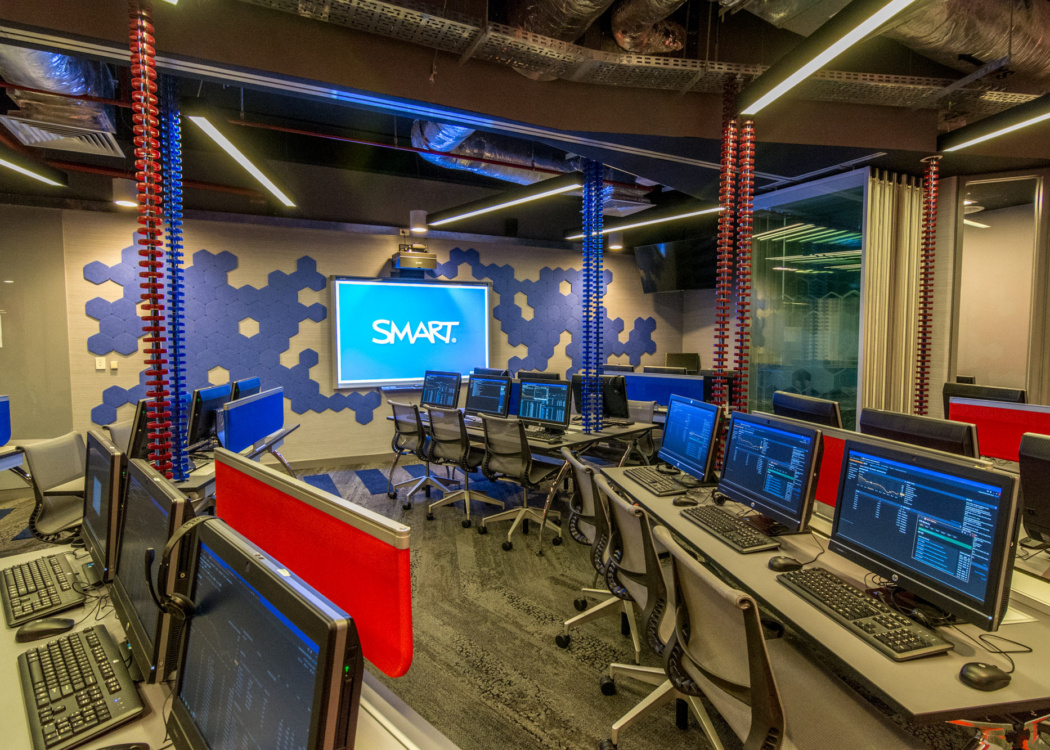


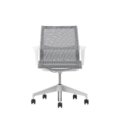

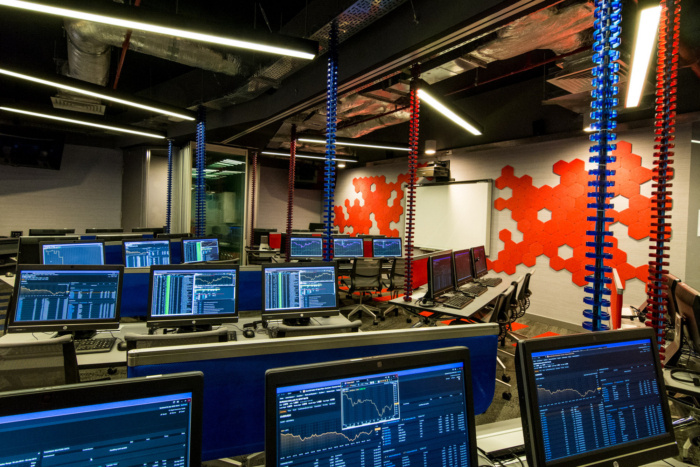
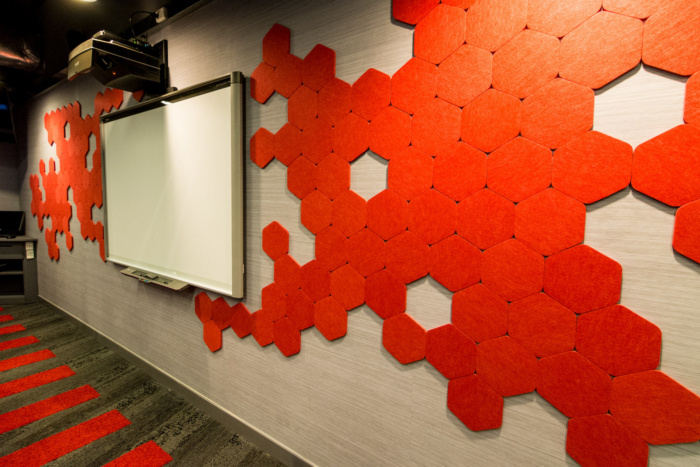
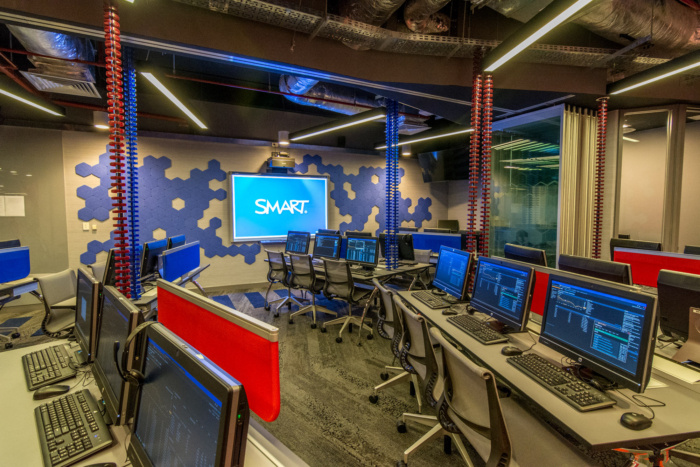
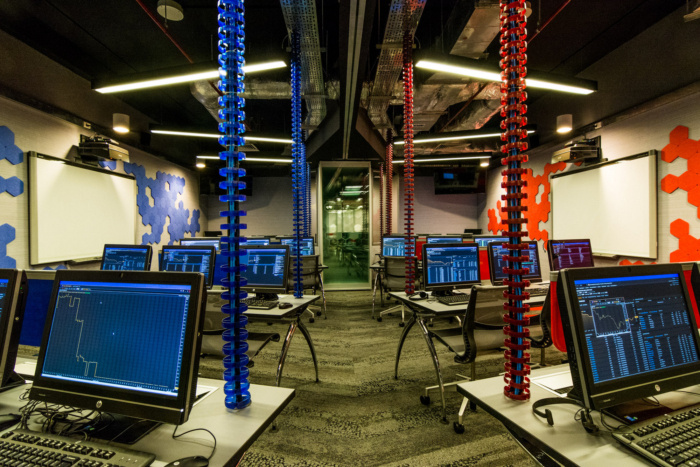




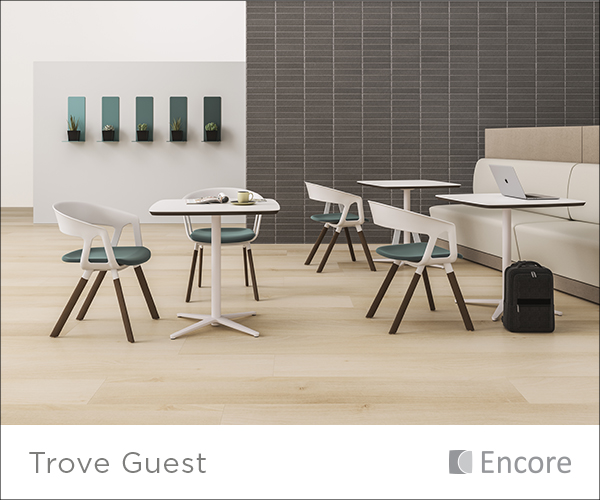






Now editing content for LinkedIn.